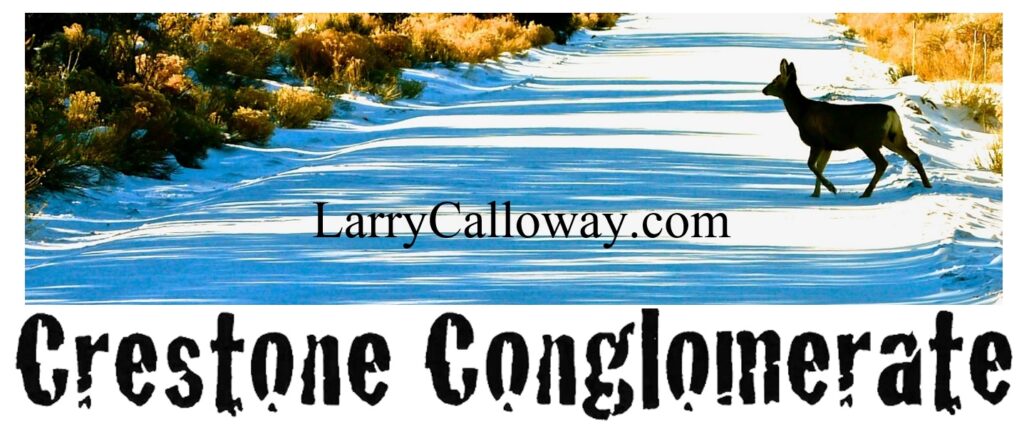Great Sand Dunes in Colorado’s San Luis Valley is the newest full national park – and also probably the most fun. People run, jump, hop, skip, roll, and frolic down the steep slopes of pure sand. They play in the strange surges of Medano Creek. They hose off happily at the headquarters parking lot. Surely some of these happy visitors are conservatives.
The Dunes is a political exception among the holdings of the besieged National Park Service – an expansion in a time of powerful public land constrictors. It is at the center of a huge UN-privatization that expanded the old national monument four fold and buffered it with the new Baca National Wildlife Preserve. Authorized in 2000 under an act of Congress sponsored by Colorado Republicans and created in September 2004 by signature of then Interior Secretary Gale Norton, the new park incorporates ranch land purchased by the Nature Conservancy in concert with other public land groups.
The Park Service in late April released its draft General Management Plan for the Dunes, and it’s good news – or ought to be – for residents of the unincorporated subdivision of Crestone Baca Grande just north of the expanded park. The community was worried about becoming a “gateway” strip. The Preferred Alternative in the Plan, which also is a draft environmental impact statement and a wilderness study, proposes protection of 51,000 acres of the former Baca Ranch south of the subdivision.
About half the park and its associated National Preserve, 76,000 acres, is already protected under terms of the Wilderness Act of 1964. With the additional wilderness, there would be no corridor for a north-south road to the dune field, which is at the south end of the park. The one and only entrance for motor vehicles would remain there.
The Plan, however, proposes “backcountry access” somewhere in a 5,000-acre band along the subdivision boundary, and this could become a point of contention. There would be a trailhead parking lot with a strictly enforced limit of 10-15 vehicles and no camping, and it would not be expanded for the 15-year lifetime of the management plan. The argument is over the route that backcountry hikers, backpackers and occasional horseback riders would drive to the parking lot.
The Park Service, whose jurisdiction ends at the park boundaries, is leaving resolution of the argument to its neighboring governmental agencies, which are Saguache County, the U.S. Fish and Wildlife Service and Rio Grande National Forest. The subdivision’s only government is the Baca Grande Property Owners Association, which currently is immersed in infighting and has not spoken with one voice, or any voice at all, on the backcountry access issue. Some strident members of the community have proposed denying access, but the Park Service points out in its plan that the relevant subdivision roads now belong to the county.
The Fish and Wildlife Service has closed its new refuge pending extensive research, to begin this year. And Rio Grande National Forest has yet to begin public discussion of a plan for dealing with access to its wilderness addition, which includes some wild canyons of the Sangre de Cristo Mountains that had been off limits when they were part of the Baca Ranch. The Forest also has to deal with an old but growing problem: the increasingly popular western wilderness approach to a group of daunting peaks that include 14,000-foot Crestone and Crestone Needle. More and more climbers and peak baggers are parking in the subdivision and crossing private land to get to the Forest trail.
The Park Service Plan implies that the Forest Service has its eye on part of the road to the old mining townsite of Liberty to solve its access problems. The Liberty road, now blocked by a Park Service gate, begins at the subdivision and weaves south along the boundary between the Forest and the Park. The Plan leaves open the possibility of a joint trailhead parking lot on the north end of the Liberty Road.
In addition to these complex jurisdictional problems, the Park Service will have to deal with some potentially disqualifying legal factors in its wilderness proposal. The main one is that an oil and gas exploration company owns the mineral rights under 23,835 acres of the former Baca Ranch, which is part of the package. The Park Service is willing to negotiate for these rights and retire them, according to the draft Plan. Similarly, it will try to retire old mining claims and buy one small private parcel that still exists in the north. And, since wilderness must be roadless and there are many tracks across the old Baca Ranch, the Park Service says it will demonstrate that these are too primitive to be called roads.
The only major exclusion from the northern wilderness proposal would be Alpine Camp, an old cabin and corrals that the Park Service would appropriate for administrative use as a backcountry ranger station. The draft Plan indicates there was strident internal argument about whether to exclude other areas to make the wilderness proposal more acceptable and the park management easier. “Ultimately the team concluded that the wilderness recommendation should be based on what is best for resources and the wilderness values over the long term, not on operational convenience and efficiency,” says the draft GMP.
It seems to me if the Park Service is willing to forgo convenience and bureaucratic ease in order to create this wonderful protective wilderness, the Baca Grande community and its embattled representatives ought to consider acting with a similar generosity and long-term vision.
